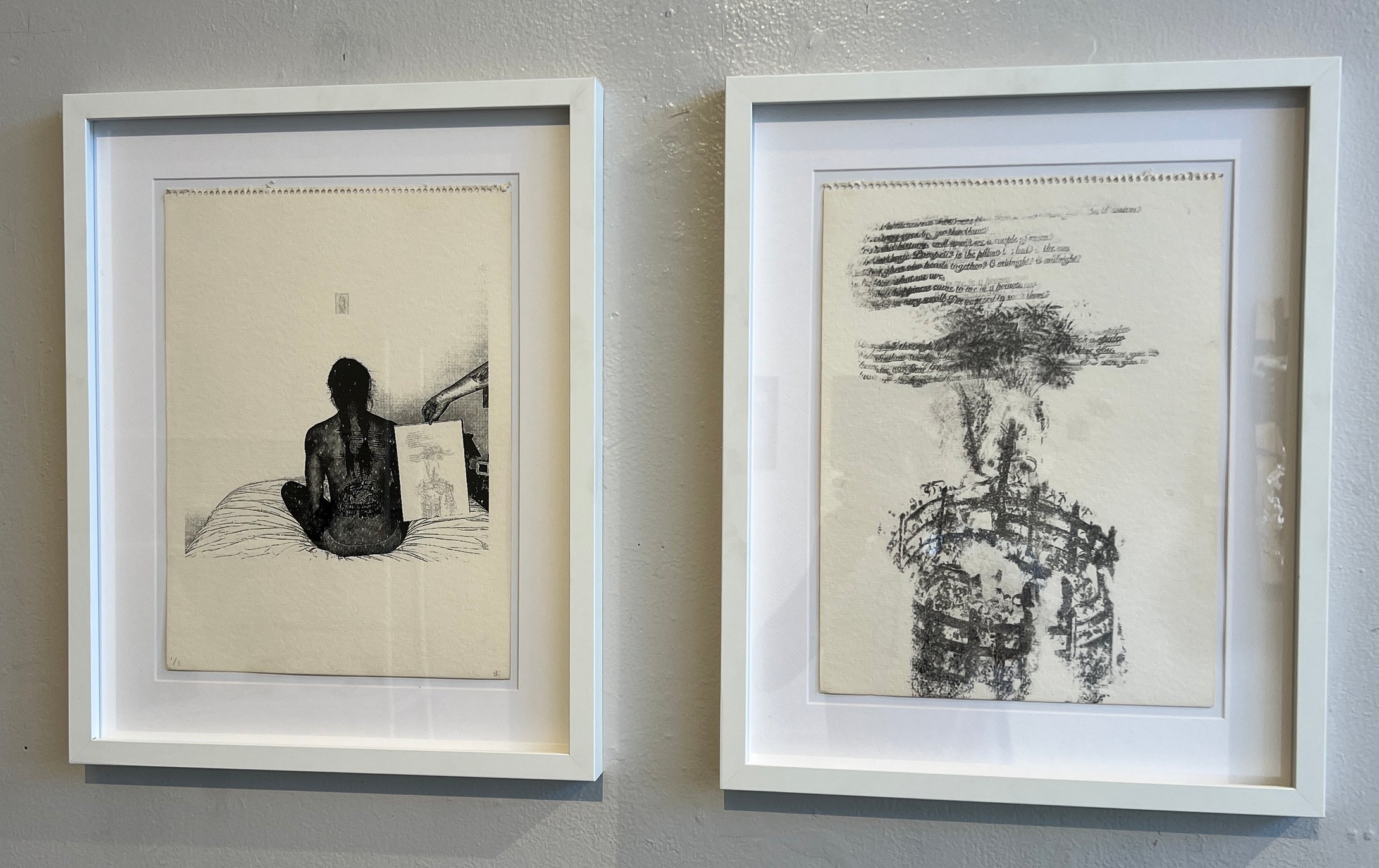
Remnants/ Relics/ Residue - Julia Kerley -The Warp is Always Thicker than the Weft
Abrams Claghorn Shop
Regular price
$250.00
Sale
14.5” x 24’ Screenprint, sweetheart, ink, $250.oo
Artist Statement
This diptych is a screenprint of the aftermath of screen printing on my sweetheart’s back– the relief print I pulled off her back, and the screen printed image of that moment. A print of a print of a print. A mimeograph of her skin, a remnant of the strain produced by the screen weaving matrix, the relief print is a residue of ink and skin oil. Screen printing often has us thinking we are in control – I can apply just the right amount of pressure, I can perfect the page orientation, I can load my squeegee just right– when, in fact, the screen has full autonomy— it’s the last boundary that kisses the blank paper before it becomes /art/. What is therefore created is the collaboration of self and medium. In this case the resulting image is the evidence of body, labor, medium, and trust.
In this piece, I consider the warp and weft components of a weaving as a metaphor for my relationship with my sweetheart who I was caretaking for while living with chronic illness. In a weaving, the warp threads are always made of a coarser and thicker fiber than the decorative weft threads. But without the thick and unaltering warp, the weft has nothing to weave through. Although caretaking and bearing witness to her pain was a decidedly coarse and painful warp thread, our weft thread would have nothing to travel through, in spite of.
Julia Kerley (Los Angeles, 1999) is an Oakland based sculptor working primarily with clay. Through a process based practice they explore themes including symbol-making, personal memory, objecthood, and ritual. Often constructing heavily textured, modular ceramic vessels based on historic references, the resulting objects represent experiments in the invention of self and the complexity of identity. Through this queering between self and object, Julia re-creates these ritual objects in service of a re-imagined history rich in multiplicity.
